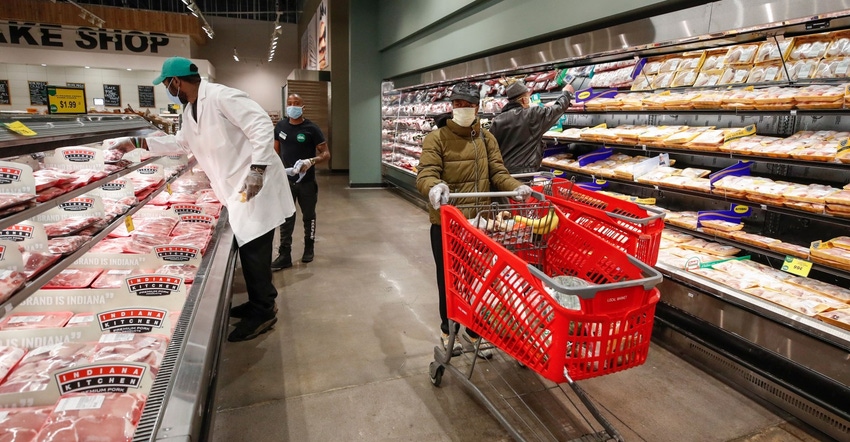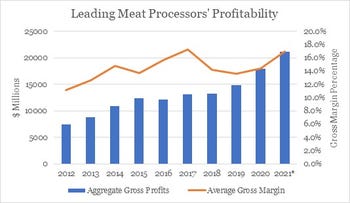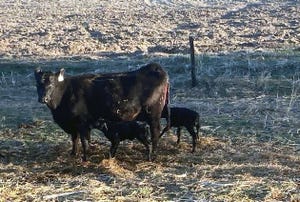White House takes aim at higher meat prices
Meat industry rejects conclusions drawn from a White House National Economic Council report.

About half of the overall increase in grocery prices can be attributed to a significant increase from meat prices—specifically, beef, pork, and poultry, according to a new report from the White House’s National Economic Council. While factors such as increased consumer demand have played a role, the price increases are also driven by a lack of competition at a key bottleneck point in the meat processing supply chain, claims the White House.
However, the main points posed in the report and actions proposed by the Biden administration run counter to findings of other independent studies and testimony offered to Congress on the role of consolidation in today’s prices.
Large price increases for beef, pork, and poultry are driving the recent price increases consumers are seeing at the grocery store, the White House notes in a recent blog written by members of the Biden administration’s National Economic Council. These three items account for a full half of the price increase for food at home since December 2020. Since that time, prices for beef have risen by 14.0%, pork by 12.1%, and poultry by 6.6%.
While speaking during a White House press briefing, National Economic Council Director Brian Deese explains in beef and in pork, consumers have seen double-digit increases in prices over the last couple of months. Although eggs have a similar supply chain with similar input and feed costs to poultry, the price of eggs have actually come down over the last couple of months.
Deese notes if you look at that market, the thing that is striking across beef, poultry, and pork is significant consolidation in those industries where anywhere from 55 to 85% of the market is controlled by the top four producers in those industries. In 1977, the largest four beef-packing firms controlled just 25% of the market, compared to 82% today. In poultry, the top four processing firms controlled 35% of the market in 1986, compared to 54% today. And in pork, the top four hog-processing firms controlled 33% of the market in 1976, compared to 66% today, the report notes.
“When you see that level of consolidation and the increase in prices, it raises a concern about pandemic profiteering -- about companies that are driving price increases in a way that hurts consumers who are going to the grocery store, and also isn't benefitting the actual producers -- the farmers and the ranchers -- that are growing -- are growing the product,” Deese says.
The report details that companies have been rewarding their shareholders with large dividends or buybacks. For instance, JBS provided $2.3 billion in dividends and share buybacks in 2020. It has proposed record high dividend payments for 2021, increasing payouts to shareholders by nearly 75% over 2020. Similarly, Tyson recently raised dividends by 6% for fiscal year 2021, spending $477 million on dividends in the nine months ending July 2021. It also repurchased $200 million of shares between September 2020 and July 2021.

Also speaking at the briefing, Secretary of Agriculture Tom Vilsack says, the reality is today that farmers are losing money on cattle, on hogs, and poultry that they're selling, at a time when consumers are seeing higher prices at the grocery store. “So, part of this is a function of consolidation and concentration, and we've learned during the pandemic that this is also a resiliency issue. When there was a major disruption in processing capacity because there are so few processors, we saw significant disruption at the marketplace as well.”
Vilsack outlined four steps the administration is taking to address concerns in the meat supply chain. The first is strengthening the current regulatory system, including relooking at the Packers and Stockyards Act to hold people accountable for unfair and discriminatory practices.
“If I'm losing $150 a head on my cattle, and the guy who's buying it from me -- who's forcing me to take that price -- is charging and making $1,800 a head, I don't know what you call it, but what I do know is that our job is to make sure that that farmer gets a fair price… when I go to the grocery store and I'm in the checkout line, I'm paying a fair price; I'm not paying more than I should,” Vilsack says.
Deese adds the President's executive order directs the Department of Justice and the Federal Trading Commission to train their enforcement on potential illegal activities, including price fixing and price gouging.
Second, is making sure there’s adequate price discovery in the market. “Because there is such consolidation, there is very little cash transaction that takes place in this market, and so it’s very difficult to determine whether or not the prices that are being paid to farmers are fair.” Vilsack explains USDA is producing studies to provide more price discovery. He also adds USDA wants to work with Congress in their efforts legislatively to pass legislation that will expand the capacity for additional information, likely through the renewal of the Livestock Mandatory Reporting set to expire Sept. 30.
Following up on recent requests to evaluate the “Product of the U.S.” label, Vilsack says the agency is looking at ways to ensure consumers fully understand what that label means, and whether people are taking advantage of whatever value-added opportunity that might present to increase price.
This administration has also funneled additional resources into expanding processing capacity for smaller processing facilities. “We provided additional resources to keep those small processing companies in business recently by announcing about $150- to $160 million of assistance and help. And we have put together a $500 million effort to work with states and local governments, as well as nonprofit organizations and the livestock industry, to look for ways in which we can finance expanded processing capacity,” Vilsack says.
The National Cattlemen’s Beef Association says it appreciates the administration’s continued focus on addressing some of the urgent issues facing cattle and beef producers. “We look forward to working together on concrete next steps to increase competition, improve market transparency, and implement commonsense labeling reforms,” NCBA says.
Meat industry challenges findings
Jayson Lusk, head of agricultural economics at Purdue University, recently testified before Congress that almost everyone is focused on packing capacity rather than looking at the fluctuations in cattle inventory that arise as a part of the “cattle cycle.”
In recent research authored with Glynn Tonsor of Kansas State, Lusk and Tonsor explain COVID-19-related disruptions led to a historic rise in the spread between livestock and wholesale meat prices. Concerns about concentration and allegations of anticompetitive behavior have led to several inquiries and civil suits by the U.S. Department of Agriculture and the U.S. Department of Justice, with increases in price differentials serving as a focal point.
In looking at publicly traded firms, the research finds that on balance, changes in the stock prices of companies with significant packing operations “do not suggest substantial windfalls corresponding with COVID-19 driven developments, and indeed the performance of publicly traded packing companies has lagged that of the overall market since the first of the year. Perhaps market developments are rationale responses to massive shocks from a common enemy to society: COVID-19.”
Tyson Foods also rejected the conclusions drawn by the White House. Tyson notes in its testimony before the U.S. Senate Committee on the Judiciary in August 2021, the increase in the price of beef, in particular, is due to unprecedented market conditions.
“Multiple, unprecedented market shocks, including a global pandemic and severe weather conditions, led to an unexpected and drastic drop in meat processors’ abilities to operate at full capacity,” Tyson says. “This led to an oversupply of live cattle and an undersupply of beef, while demand for beef products was at an all-time high. So, as a result, the price for cattle fell, while the price for beef rose. Today, prices paid to cattle producers are rising.”
Tyson adds labor shortages – the inability of the industry to adequately staff its plants – has exacerbated the situation. Labor shortages are also affecting the nation’s pork and poultry supply. Tyson says it pays its worker on average $22 per hour, including full medical benefits.
Mark Dopp, chief operating officer for the North American Meat Institute, also disputed the claims outlined within the report, and reiterated the role the labor shortage and pandemic played in the situation that now exists.
“As with almost every industry, meat and poultry packers and processors of all sizes have been, and continue to be, affected by the global pandemic and the inflationary trends that challenge the U.S. economy,” says Dopp. “American consumers of most goods and services are seeing higher costs, largely due to a persistent and widespread labor shortage. The meat and poultry industry is no different.
“Issuing inflammatory statements that ignore the fundamentals of how supply and demand affects markets accomplishes nothing,” Dopp continues. “Meat and poultry markets are competitive and dynamic with no one sector of the industry consistently dominating the market at the expense of another.”
About the Author(s)
You May Also Like


.png?width=300&auto=webp&quality=80&disable=upscale)
.png?width=300&auto=webp&quality=80&disable=upscale)

